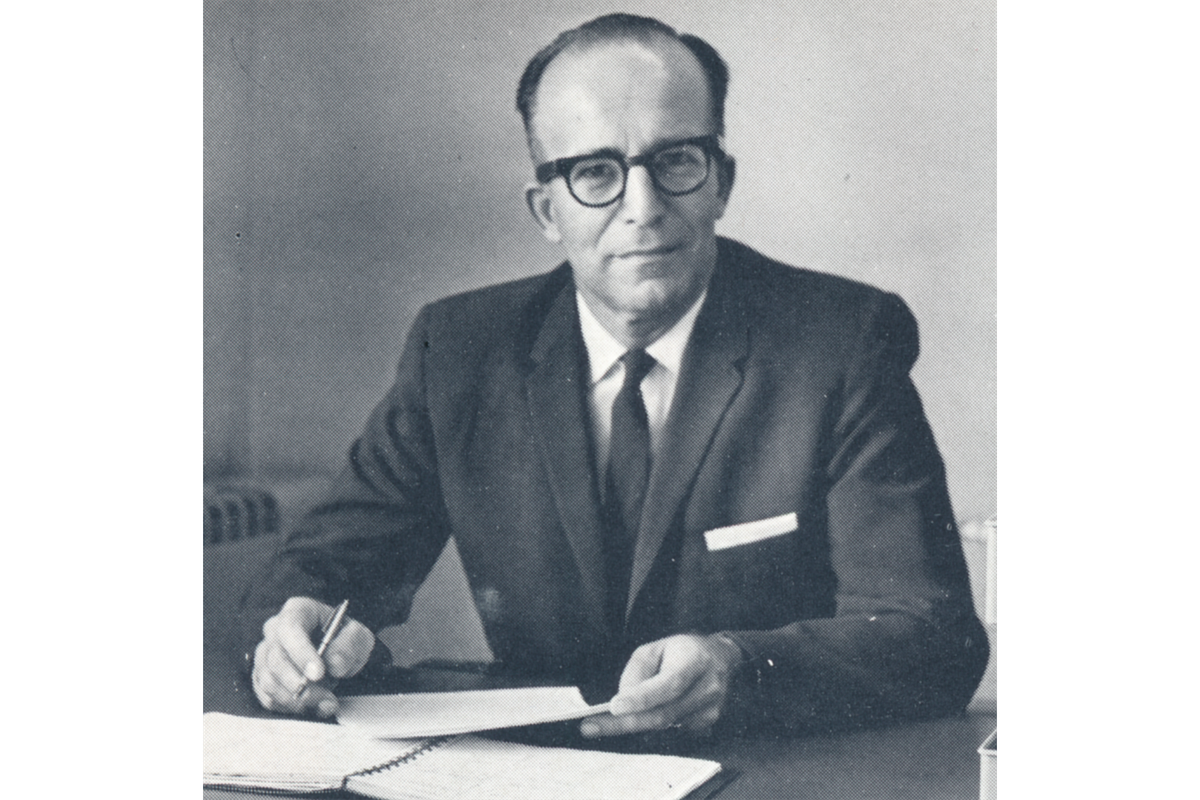Local Legends: The consolidator
Robert W. Bogan was one of the primary architects behind creating the boundaries of the Talawanda School District as it exists today.

Students have headed back to the classroom as a new school year begins for the Talawanda School District. If it wasn’t for the tireless efforts of Robert W. “Bob” Bogan, they might still be attending multiple different school districts scattered across northwestern Butler County.
Born on Feb. 23, 1913 in Clarksville, Bogan was a native of Clinton County, Ohio. He grew up on the family farm in Adams Township run by his parents, Vernon LeRoy and Nina P. (Probasco) Bogan.
Bogan was himself a product of rural schools. Late in life, he recalled that one of his earliest memories was that of his school’s superintendent discussing local soldiers not returning home from World War I with his class.
After graduating from Adams Township High School, Bogan stayed near home, and in 1935 he earned a degree in mathematics from Wilmington College. 1939 proved to be a big year for Bogan. In that year, he started teaching at Fairfield High School, moved to Hamilton, and married Mary Louise (Murrell) Bogan on Aug. 31.
Continuing his education, Bogan went on to earn a master's degree from the University of Cincinnati in 1940. He remained at Fairfield High School until 1942, when he left to become the superintendent of the rural Hanover Township Local School District.
By that time, the pressure of the Great Depression and World War II had stressed the rural school districts, as they started to contend with increased enrollment and aging school buildings. These factors directly led to the preliminary movements in the major school consolidation that Bogan would soon oversee.
These movements centered around Oxford, where the students from outside the village began to attend Oxford schools for the first time. With the influx of outside students, the Oxford Village School District was rechartered as the Oxford Local School District in 1935. Additional students came in 1946 when the Oxford Township Rural School District merged with the district.
Oxford had built a new village school building in 1929 and officially opened it in 1930, naming it Stewart High School in honor of long time superintendent William H. Stewart. Two years later, in 1948, Bogan was named executive head of Stewart and superintendent of the Oxford district.
Having strong connections with the Hanover Township School board from his time as the system’s superintendent, Bogan soon began negotiating with them to consolidate Hanover and Oxford’s schools.
This wasn’t undertaken without backlash, especially from Hanover parents opposed to sending their children to schools in Oxford. Parents voiced concerns over the potential loss of community identity for Hanover, increased difficulty with students finding spots on sports teams and potential underrepresentation on the combined school board.
Flying in the face of this resistance, Bogan pressed on, truly believing that a consolidated school district would offer the best possible education for students in both communities. This was especially the case following the emergence of new state standards that some rural schools struggled to meet.
His endeavors were ultimately successful and culminated in the Sep. 14, 1953 creation of the Oxford-Hanover Local School District by the Butler County Board of Education. Although he was appointed superintendent of the new district, Bogan’s work wasn’t yet finished.
Under his leadership, an offer was extended for the the Milford Township School District in Darrtown, as well as the Somerville School District, to also join the newly formed district. This offer was accepted, and the four-district merger was completed after votes by the boards of the two districts in November 1953.
The new Talawanda School District needed a home. After a vigorous campaign, voters approved a $1.1 Million bond issue in May 1954 for the construction of a new high school. Bogan simultaneously worked on constructing the new building while also serving as the president of the Butler County Teachers Association and courting Miami University to merge McGuffey High School with Talawanda.
The school building was completed, kind of, in time for the start of the 1956-1957 school year. Students from Talawanda’s inaugural year remember attending the school while kerosene heaters warmed its halls and the gymnasium still lacked a roof.
McGuffey graduated its last high school class in 1956, sending its students to Talawanda in the following years. Reily Township Local School District also merged with Talawanda in 1968, the year before Bogan’s retirement.
In his retirement, Bogan continued to be active in his community and was named an Oxford Citizen of the Years in 1969. In August 2006, Bogan Elementary School was dedicated in his honor. Bogan, at 93 years old, was proud of the honor and responded by donating funds to purchase books for the school’s students. He died on April 29, 2007 while a resident of the Knolls of Oxford and is buried in Oxford Cemetery.
The 1956 Stewart High School Spectrum yearbook concisely sums up Bogan’s commitment to the education of his students, “He has constantly maintained an interest in the welfare of each
student. Each graduate is aware that he is personally interested in his success in whatever occupation the student pursues. The senior class is honored and deeply appreciative of having had a man such as Mr. Bogan as their Superintendent.”
Editor's note: A previous version of this story stated that Stewart High School was built in 1930. The story has been updated to reflect that the school was built in 1929 and officially opened in 1930.
Brad Spurlock is the manager of the Smith Library of Regional History and Cummins Local History Room, Lane Libraries. A certified archivist, Brad has over a decade of experience working with local history, maintaining archival collections and collaborating on community history projects.




